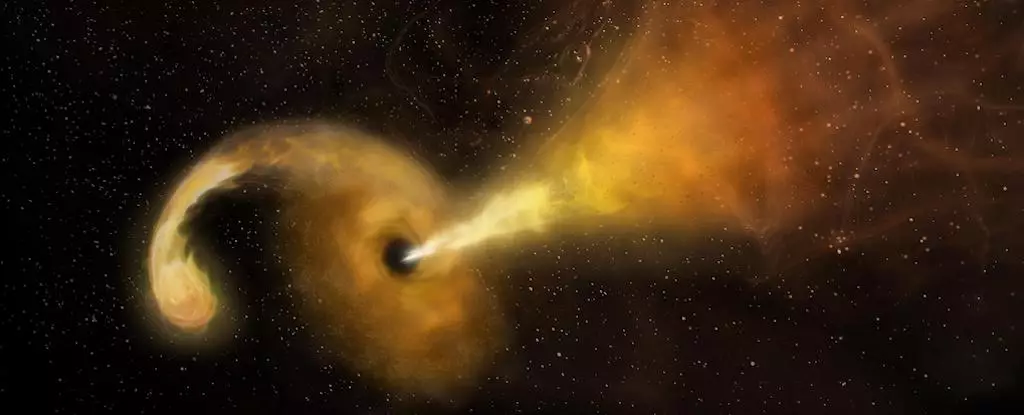On April 8, 2024, astronomers were greeted with a fascinating cosmic event designated EP240408a, first detected by the Einstein Probe, an advanced X-ray space telescope. This celestial phenomenon drew considerable attention because it did not conform to any previously cataloged types of cosmic explosions. Such explosions typically manifest in well-defined patterns, producing specific wavelengths that allow astronomers to classify them. However, EP240408a presented a perplexing conundrum, prompting scientists to revisit and potentially revise their understanding of cosmic phenomena.
In the initial analysis, EP240408a appeared akin to a regular gamma-ray burst. Such bursts are generally known for their immense energy release, visible across various wavelengths, particularly in X-ray emission. However, subsequent examinations using an array of telescopes operating over a spectrum ranging from ultraviolet to radio waves revealed discrepancies in the event’s classification. This divergence spurred a host of theories regarding its origin and nature, leading researchers to conclude that EP240408a might represent an unprecedented cosmic event.
The leading hypothesis among astronomers posits that EP240408a may be linked to the death of a white dwarf star, which is being torn apart by the gravitational forces of a medium-sized black hole. This cataclysmic interaction potentially generates a highly energetic jet of material directed towards Earth, making it observable from our planet. Brendan O’Connor, the leading investigator from Carnegie Mellon University, encapsulated this dilemma succinctly: “EP240408a ticks some of the boxes for several different kinds of phenomena, but it doesn’t tick all the boxes for anything.” The unique combination of characteristics exhibited by this event raises the specter of it being an entirely new cosmic category.
This event falls within a broader classification of transient celestial occurrences, which are relatively short-lived and energetic. To decode the mysterious nature of EP240408a, astronomers have meticulously analyzed data from multiple observational sources, including ground and space-based telescopes like NuSTAR, Swift, and the Very Large Array (VLA). These observations revealed that for the first ten seconds, the event emitted soft X-rays before stabilizing over approximately four days, only to fade away swiftly thereafter. Such behavior is inexplicably prolonged for traditional gamma-ray bursts and too brief for other established categories, establishing a distinct anomalous profile for EP240408a.
One of the more puzzling aspects of EP240408a is the absence of corresponding radio emissions. Typically, luminous cosmic events, particularly those associated with jetted material, exhibit detectable radio signals. However, even after multiple observations made at varying intervals post-flare, the VLA found no trace of radio waves linked to EP240408a. This anomaly has led researchers to reconsider previous assumptions about the signal’s origin, as O’Connor noted: “When we see something this bright for this long in X-rays, it usually has an extremely luminous radio counterpart.” The silence from the radio domain raises the possibility that this event may not adhere to the conventional rules governing gamma-ray bursts or tidal disruption events.
In ruling out potential explanations such as quasars or fast blue optical transients, astronomers have focused on tidal disruption events (TDEs) as the most credible explanatory framework. TDEs are dynamic, flashy episodes that occur when a black hole disrupts and consumes a star. In such instances, jets of material can be launched from the black hole, oriented towards the observer. The characteristics observed in EP240408a lend credence to the theory that it results from a medium-sized black hole interacting with a white dwarf star.
There is still much to learn about EP240408a, particularly concerning its radio emissions. Existing theories suggest that should radio signals eventually emerge, it would validate the TDE hypothesis and deepen our understanding of such phenomena. However, if the silence persists, it may point to a fundamentally new type of transient event, challenging established cosmic narratives and understanding.
As research into EP240408a continues, astronomers are excited by its potential to reshape our frameworks of knowledge about gamma-ray bursts and other cosmic explosions. This event captures the imagination of scientists and space enthusiasts alike, underpinning the notion that our universe is filled with unknown wonders yet to be discovered. Whether it ultimately falls into an established category or paves the way for new cosmic terminology, EP240408a stands as a testimony to the enduring mysteries of our universe.


Leave a Reply